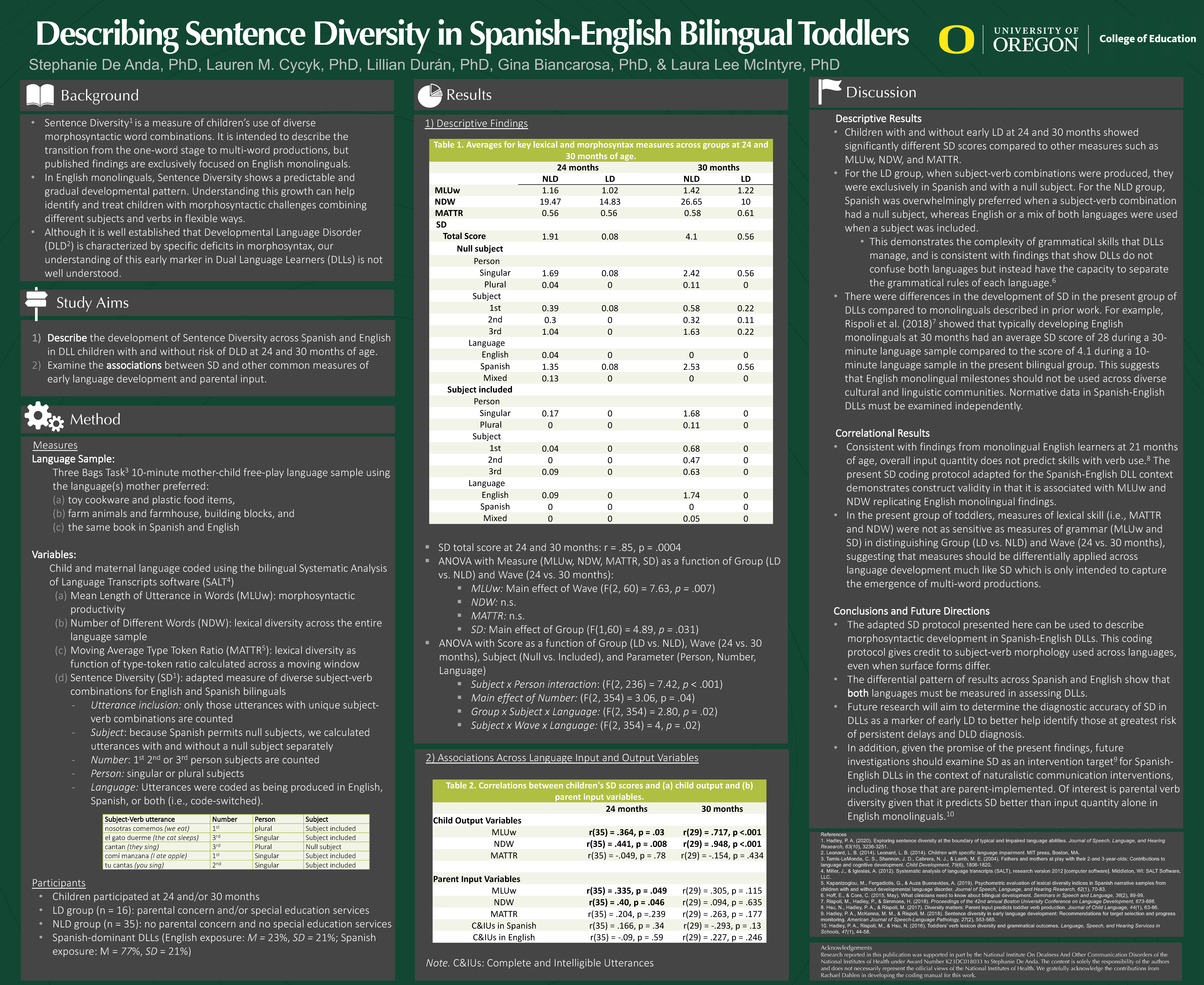Stephanie De Anda - University of Oregon

Describing Sentence Diversity in Spanish-English Bilingual Toddlers
Authors and Affiliations
Stephanie De Anda, University of Oregon
Lauren Cycyk, University of Oregon
Lillian Durán, University of Oregon
Gina Biancarosa, University of Oregon
Laura Lee McIntyre, University of Oregon
Abstract
Language delays and disorders are characterized by specific deficits in morphosyntax (Leonard, 2017). Sentence Diversity (SD) has been proposed as a measure of children’s use of diverse morphosyntactic word combinations and offers strong diagnostic utility (Hadley, 2020). No study has examined SD in bilinguals. The present study describes the developmental changes in Sentence Diversity from 24 to 30 months in Spanish-dominant bilinguals. Children with language delay (LD, n=16) and without (NLD, n=35) participated at 24 and 30 months of age. Children were primarily exposed to Spanish relative to English. Language samples were collected through child-mother free-play observations. Utterances were transcribed using the Systematic Analysis of Language Transcripts (SALT, Miller & Iglesias, 2018), and variables were extracted: Number of Different Words (NDW; measures lexical diversity), MLU in words (MLUw; measures morphosyntactic productivity), and Sentence Diversity (SD; measures morphosyntactic diversity in subject-verb combinations). The LD group showed attenuated increases across all measures compared to NLDs, with the
greatest differences observed in SD (see Table 1). Further, SD was linear: scores at 24 months predicted scores at 30 months (r =.85, p<.001). Similarly, SD correlated with NDW and MLUw at 24 and 30 months (p’s<.02, see Figures 1 and 2). The present study showed that SD was most sensitive to morphosyntactic differences between the NLD and LD groups relative to other measures in Spanish-English bilingual toddlers. The results highlight the diagnostic utility of SD for toddlers at risk for language disorders. Longitudinal data collection at 36 months of age is ongoing.
